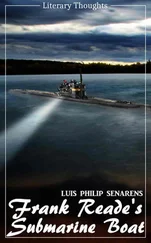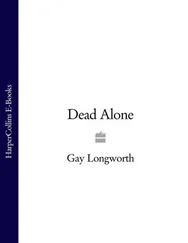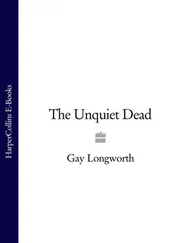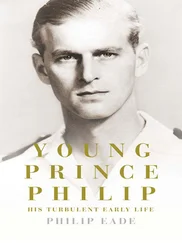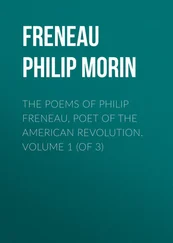Chapter 2 describes the rise and fall of Kievan Rus. The three that follow consider the rise of Muscovy, its attainment of imperial status under Ivan the Terrible (who adopted the insignia of the double-headed eagle from the defunct Roman Empire) and its subsequent collapse. The next group of chapters deal with the new imperial expansion under the Romanov rulers Alexis, Peter the Great and Catherine the Great — an advance that was slow at first, but which, despite fierce resistance, gained steadily in tempo. They also describe the apogee of Romanov power which followed the Napoleonic Wars, the first great and bloody campaigns against the Chechens and Circassians in the Caucasus — wars which inspired some great romantic and imperialistic literature — and the subsequent decline and collapse in 1917–18.
The last set of chapters traces the astonishing rise of Soviet Russia, the burgeoning of its empire following the defeat of Nazi Germany, and its no less astonishing and precipitous collapse. Chapter 15 describes post-Communist Russia, while the Conclusion summarizes the results of the inquiry and also assesses Russia’s place and prospects in the world in 2004.
1
The Russians: Who are They?
IN JANUARY 1547, within days of the deaths of Henry VIII of England and Francis I of France, at the other end of Europe a sixteen-year-old youth was crowned tsar of Russia. The ceremony took place in the Kremlin’s Cathedral of the Assumption, one of most richly decorated of all Europe’s cathedrals, and when the Tsar emerged, crowned and holding orb and sceptre, to be showered with gold to symbolize prosperity, all the bells of Moscow pealed out and the huge, enthusiastic crowds roared as if in expectation of great things to come. The youth they acclaimed was Ivan IV, first titular emperor of Russia, self-proclaimed descendant of the Viking Riurik and of the Roman Emperor Augustus. He was to prove himself a dedicated empire-builder, whose possessions came to extend right across Eurasia, from Sweden to Persia and from the Baltic to the Pacific. It was the largest imperial heartland in the world.
Most accounts of the Russian past begin here — or even later, with Peter the Great — and give only cursory treatment to the preceding periods, despite their relevance to the development of Russian imperialism. This history, however, will begin at the beginning. But what was the beginning? Russian tradition suggests the arrival of Riurik and his band of Vikings in the ninth century, but since they found the land inhabited should one not begin earlier? And should one begin with the people or with the land of Russia? Common sense suggests the land, but, since the Russian environment and ecology were formed to an extent simultaneously with human settlement, there is reason to deal with them together. Either course presents a problem, however, since this story begins long before the written records on which most history is based, and since no historical records of those times survive (even supposing they were ever made). We shall therefore have to reconstruct our account of what happened by inference, from the conclusions of sciences other than history.
Anthropologists, archaeologists, experts in linguistics and others have all contributed to our understanding of what happened, but there are questions on which there is, as yet, no consensus the live areas of scholarship fired by dispute. Even when written sources appear, they cannot be taken at their face value. The early chroniclers worked for princes. They recorded what was of interest to their masters and, like public-relations staffs today, did so in ways which showed them in the best light, suppressing inconvenient facts. They justified their princes’ actions, supported their claims, and blackened the reputations of their enemies.
Despite these problems, the data unearthed by scholars in a variety of fields allows us to construct a picture of even the earliest past of human society and its environment. The information is patchy, disputed at points, and tells us little or nothing about some things we would like to know -such as the stories of individual human beings. The best picture we can build of the Russians’ earliest past, then, will resemble an old, imperfect silent movie. It will describe a long-drawn out process in a series of brief rushes; the definition will often be indistinct, and the film will break off altogether at certain points. Yet there are some certainties about human existence in what is now Russia from as early as twenty millennia ago, and even a sweeping survey of this difficult prehistoric ground may yield clues that could prove vital to later conclusions about the nature of Russians and their expansionist tendencies.
The territory of European Russia had been populated before the Ice Age. Among the earliest remains that have so far been discovered is a grave at Sungir, near Vladimir in central Russia. It dates from between 20,000 and 26,000 years ago, and contained the bones of a twelve- or thirteen-year-old boy and a girl of six or seven. The dead wore garments similar to modern anoraks and leather trousers that were sewn directly to their moccasin-like shoes — a device which Siberians still use to fight the cold. Their clothes had been decorated with thousands of shell beads. These and the variety of stone tools, pierced antler rods, ivory bracelets, and the two spears made from straightened mammoth tusks found with them suggest that the children were the offspring of a chief. 1
The Sungir remains mark an end rather than a beginning, of societies as well as of individuals, for the people of Sungir disappeared along with the mammoths and the population of almost all the rest of Europe. As the cold became more intense, they either died or moved to the warmer climes of the continent’s southern peripheries. However, the territory was resettled after the Ice Age, and so our story resumes after a lapse of several millennia about 10,000 to 16,000 years ago.
One basic certainty is that the Russians are Europeans by descent. We know this from the work of the geneticist Dr O. Semino and his associates. In the year 2000 they published a major study which has extended knowledge of the genetic history of Europeans. They had analysed blood samples from over 1,000 men from all over Europe, and their findings, which focused on the Y chromosome, which is carried only by males, led them to conclude that when Europe was struck by the Ice Age, about 24,000 years ago, its Stone Age inhabitants withdrew in three directions, taking refuge in the warmer climes of southern Europe: Mediterranean France and Spain, the Balkans, and what is now Ukraine. The Russians are descended from this last group.
The Ice Age ended very slowly, and the global warming was interrupted by phases when the great cold returned. Eventually, however, the glaciers retreated, and the earth warmed somewhat, although permafrost continued to hold the tundra of the far north and large tracts of Siberia in its deadening grip. It does so to this day. There are still immense tracts of tundra where the subsoil is permanently frozen, which makes for problems in maintaining rail beds for Siberia’s railways. But elsewhere, as temperatures became milder, the atmosphere became moister. As it did so, life gradually returned — at first in the form of plants, then of insects and animals. As larger areas became habitable once more, descendants of the three groups of refugees began to repopulate those regions of Europe which their ancestors had abandoned when they became ice-bound.
By the time of the return, each group of humanoids carried a genetic specific that differed significantly from the others. We also know that most of them belonged to blood group B, and were predominately rhesus positive. But the blood of the Ukrainian group, to which the Russians owe their origins, was now distinguished by haplotype Eu 19. This genetic marker was to be bestowed on the generations of Slavs and other Europeans who were to follow. 2
Читать дальше





![Stephan Orth - Behind Putin's Curtain - Friendships and Misadventures Inside Russia [aka Couchsurfing in Russia]](/books/415210/stephan-orth-behind-putin-s-curtain-friendships-a-thumb.webp)
